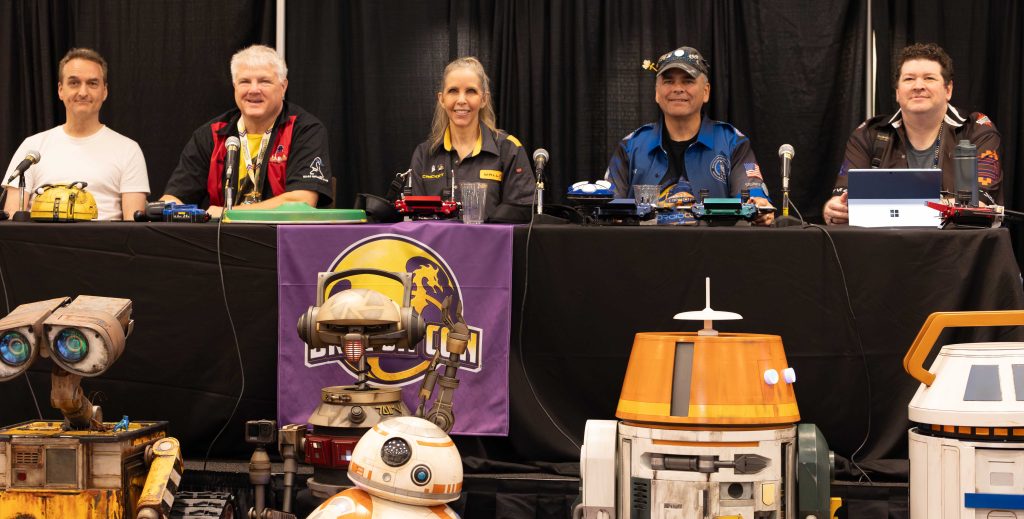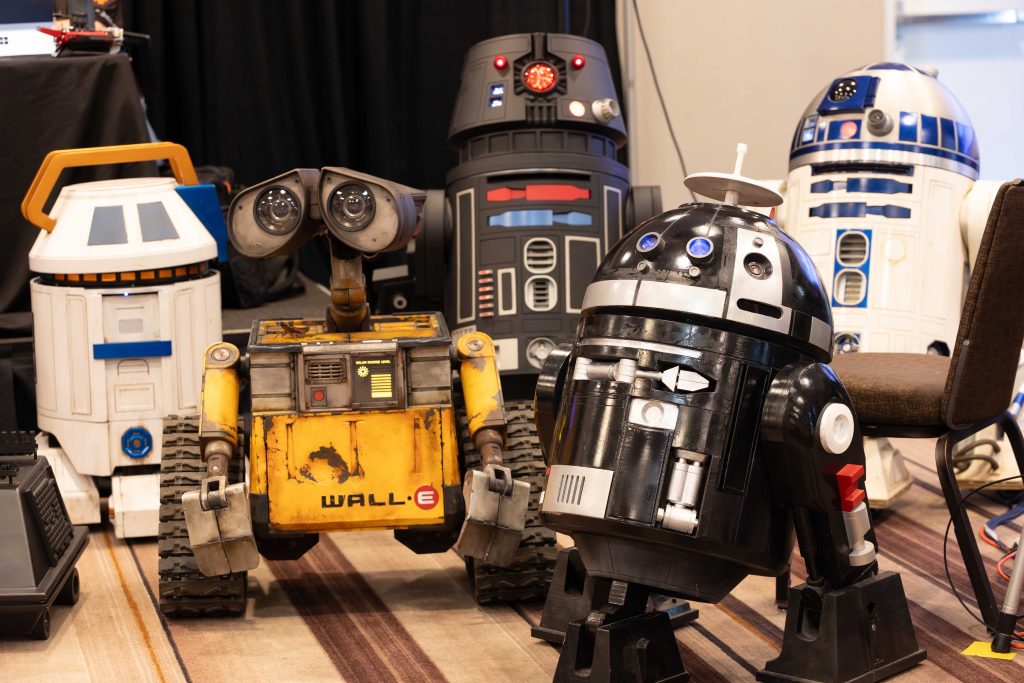
Astromechs, R2D2s, K-Nines, and Wall-E units invaded the Marriott A601-602 Sunday afternoon 4PM for the Star Wars Track session “Droid Builders.” The panel, composed of veteran droid builders from across the country including Andrew Schwartz, Cricket Lee, Rob Emery, and Tim Hebel, offered their advice along the way as moderator Mike Cummins took the audience through the process of creating their very own droid.
With nearly a dozen droids standing at attention in front of the speakers’ table, Cummins began by asking why? Why build droids? Cummins attended a droid panel at Dragon Con in 2011 and became enthralled with the possibility of building his own. Hebel, along with many members of the various droid builders’ clubs that exist across the country, frequently takes his droids to schools and charity events. He describes his units as “happiness machines.” Lee, who built her Wall-E unit simply because she thought it would be cool, declared that her unit has resonated so powerfully with people that it has made them cry. Schwartz emphasized the camaraderie of the droid building community. Many of his friends are builders and he loves getting together with them to work through the challenges of building a droid.
One might think that building a droid requires training as an engineer, but this is simply not so. Lee embarked on her journey to build a Wall-E unit with no technical or mechanical knowledge. She knew “less than nothing” about it but was determined to achieve her goal. So, through the community of droid builders, and the “University of YouTube,” she developed the skill set that allowed her to achieve her dream. One example of this in her experience was learning to weld. It was essential to her build, so she had to learn it. Now, it’s a skill she can use at home to make other repairs.

Emery pointed out that it is exactly the challenge of learning new things that makes this so appealing. People are afraid of electronics but once you get into it you realize that it’s not really that complicated. The same too with basic programming and CAD. The tools and support are out there to such a degree that a builder need not fear.
Another consideration that many have when pondering the possibility of building a droid is cost. Again, the panelists emphasized that while you can spend a lot of money on materials, fabrications, and construction, it isn’t necessarily required. Schwartz has always built his droids on a budget, and he enjoys finding innovative and unconventional ways to accomplish his construction goals. While it is the case that you can spend a lot of money designing and fabricating astromech domes and the mechanisms that allow it to spin, he found a simple alternative: a Sit-n-Spin. The base of the childhood toy is the perfect mechanism to allow a droid’s head to spin. “Don’t let cost stop you,” Schwartz declared, the solutions are out there, and they need not cost a fortune.
One component of the construction you do want to really spend some time considering is painting. Hebel pointed out that you can have the best built droid in the world, with great internal components and framing, but what matters most is the first impression your droid makes when someone sees it. They won’t be looking at the frame or the drive motor, they’ll be looking at the skin, so it is critical that you really pay attention to the paint scheme and how that is going to look. Schwartz likes to create droids that meet his artistic and creative interests. He brought a “Batman” R2D2 unit to the session! The key is to have fun. What matters most is that the unit you build makes you happy. There are no definitive standards or expectations. Your droid is done, whether it can move or not, whether it can chirp or not, when the builder is happy with it. These really are “happiness machines.”
